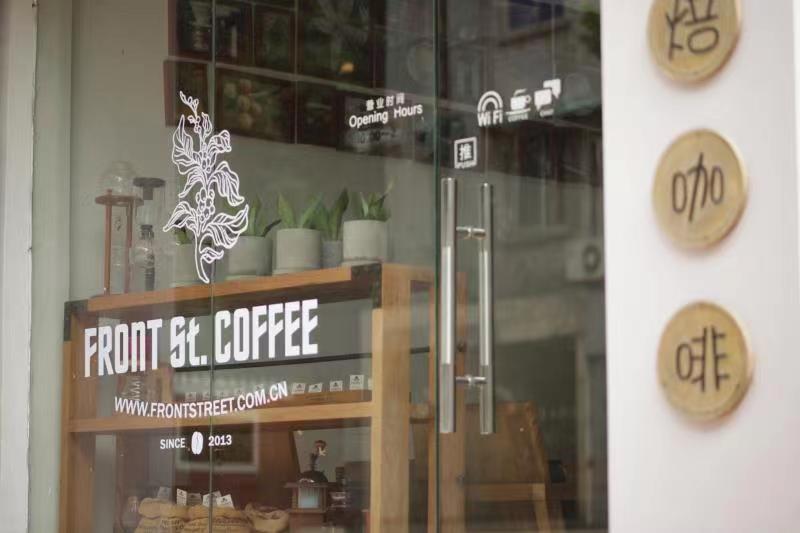How to open a coffee shop? can you open a coffee shop? can you open a coffee shop?
The statistics that 90% of restaurants (including cafes, cafes and the like) fail in their first year of operation is a common myth. In fact, according to a study by researchers at the University of California, Berkeley, this figure may be closer to 17% (2% better than other service industries) and 20% live to their 15th year, which is an exciting figure for fledgling entrepreneurs. Opening a coffee shop or any business is risky, and the COVID-19 pandemic must now make that proposal riskier, but during the study, Americans spent about $50 a week eating in restaurants, some of them coffee and baked goods, more than five years ago.
This is a long process after the pandemic has subsided, but it is currently under way and we would like to see traffic recover. But how do you get these people to spend some of their $50 on your place instead of someone else's? Location is still one of the keys to the right side of the statistics. Let's focus on three of the many common questions about the location of coffee shops. This is not a comprehensive list, but an introduction to the reconnaissance and evaluation process of potential stores. Avoiding these three and any other problems that arise will save you time and money (not to mention stress).
The rent is too high
About the most important question about a position, a question that is often asked inexplicably is simple: can you afford it? If you can't, your dream space will soon become your nightmare space. On this issue, please refer to your hard-working sales forecast and business plan. Opinions differ on the ratio of rent to sales, but rent should probably not exceed 15% of monthly sales. 10% is a healthy target. This is much easier in some cities than in others. "if a location does not meet your standards or your plan, please go away."

Colin Harmon, founder and owner of Dublin's iconic 3rd Floor Espresso (3fe), even calculated predictions for three different cafe sizes before looking for locations: a takeaway espresso bar, a small caf é and a large caf é. In this way, when the "perfect" position is really available, he will know exactly where it fits, or whether it suits his means and vision. This is a pertinent suggestion. If a location does not meet your standards or your plan, please leave. This requires some discipline, which can be frustrating now, especially if the space is beautiful, but it will protect your business from unreasonable expectations and the resulting pressure. Although you can renegotiate your lease terms if you find yourself in an unstable financial position, it doesn't advertise much for obvious reasons, while for other equally obvious reasons, it depends on your landlord, their cash position can also be stressful, so, like most things, it's best to get rent in the first place.
Insufficient flow
Find a location with plenty of traffic, whether it's driving, bus, bike, subway, walking, etc., to maintain your sales forecast. It is helpful to take some time, even if only for a minute or twenty minutes, outside the potential location, to observe the behavior of passers-by and pay attention to walking and driving, especially during the morning rush hour. At first glance, it may seem like a tedious exercise, but it can reveal important information about the feasibility of the store. You can expect a small number of these passers-by to stop and a small number of them to stay for a while. For example, if 5000 commuters pass by during the morning rush hour and 2% of them stop (reasonably expected), there will be a total of 100 customers. These figures, with average sales of $5 (coffee and scones, or lattes), may reach $500 per day and $15,000 per month, thus justifying a monthly rent of no more than $2250. Considering the current price of handmade lattes, $5 is quite conservative. It can be said that knowing about traffic means that you know or at least have a better understanding of the reasonable terms of rent.
Important Notice :
前街咖啡 FrontStreet Coffee has moved to new addredd:
FrontStreet Coffee Address: 315,Donghua East Road,GuangZhou
Tel:020 38364473
- Prev

The difference between Arabica beans and Robusta beans 11 differences between Arabica and Robusta
What's the difference between the two heavyweights in the coffee world? Let's make a comparison between Arabica coffee and Robusta coffee. Arabica coffee, which originated in the highlands of southwestern Ethiopia, is the most popular coffee species in the world, accounting for 60% or more of the world's coffee production. Second only to Arabica coffee is Robusta coffee, which is made of coffee bean plants.
- Next

How to adjust the sour taste of hand-made coffee? Does coffee taste sour? where does coffee taste sour?
I remember when we were young, we heard that the description of coffee revolved around: fragrant and mellow (hidden meaning: coffee is strong and bitter). Due to the lack of baking technology and the poor quality of coffee beans, if it is not paired with milk / sugar, a sip can immediately refresh people, which has made people's understanding of coffee for many years inseparable from bitter words. With the emergence of the boutique coffee craze
Related
- Beginners will see the "Coffee pull flower" guide!
- What is the difference between ice blog purified milk and ordinary milk coffee?
- Why is the Philippines the largest producer of crops in Liberia?
- For coffee extraction, should the fine powder be retained?
- How does extracted espresso fill pressed powder? How much strength does it take to press the powder?
- How to make jasmine cold extract coffee? Is the jasmine + latte good?
- Will this little toy really make the coffee taste better? How does Lily Drip affect coffee extraction?
- Will the action of slapping the filter cup also affect coffee extraction?
- What's the difference between powder-to-water ratio and powder-to-liquid ratio?
- What is the Ethiopian local species? What does it have to do with Heirloom native species?

